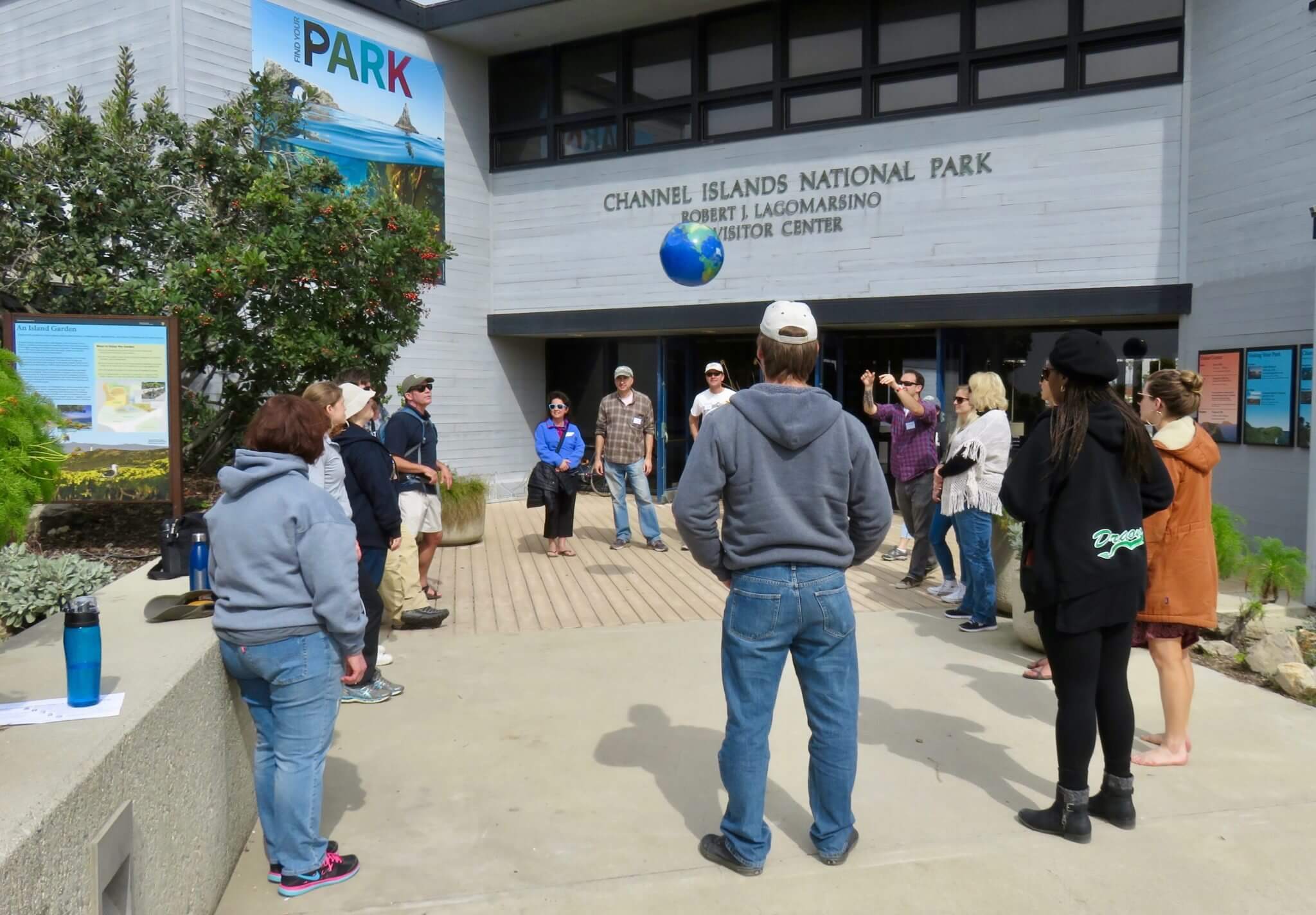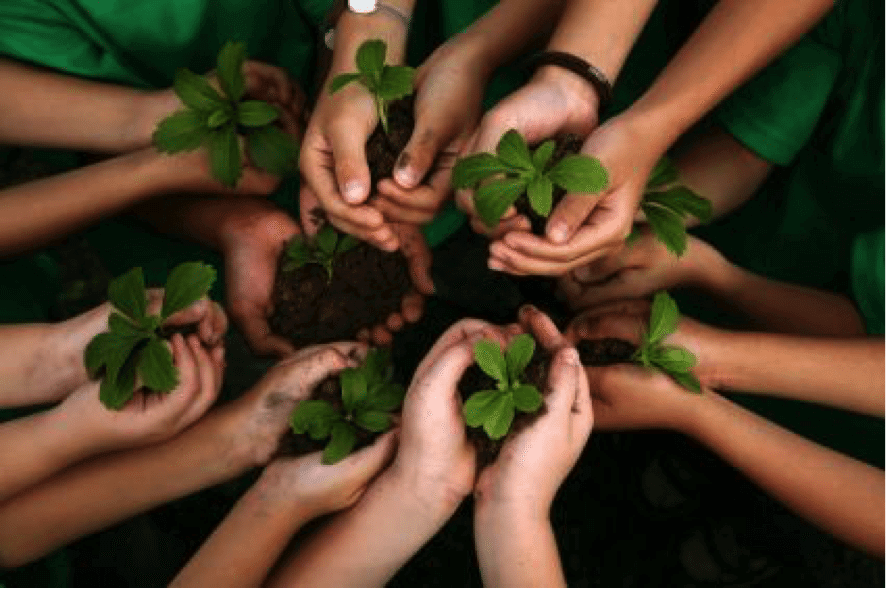Part two: A Deeper Dive
Please refer to Part 1 of Kurt’s post, where he shares an in-depth look at the Get Outside with NGSS workshop!
We have a unique opportunity in 2017 to invigorate public education; specifically, to elevate environment-based science learning. This exciting momentum is driven by dramatically increased recognition of the value of outdoor and environmental learning in education policy. How do we support classroom teachers to become more effective outdoor instructors? How do they gain the skills and the strategies to keep students academically successful? How can environmental literacy avoid being one more thing to do?

Basic Structure of Get Outside with NGSS Workshops
Sponsored by the National Park Service, USC Sea Grant, and Project WET, the workshop series Get Outside with Next Generation Science Standards (NGSS), supports teachers as they learn how to use the outdoors for learning and weave California’s Environmental Principles & Concepts (EP&Cs) and the Principles of Ocean Literacy into effective instructional sequences.
A Deeper Dive
Let’s take a minute to look at the workshop in more detail to illustrate the integrative goal and practical method for making the EP&Cs and Principles of Ocean Literacy measurable, tangible, and implementable.
Invitation to Engage
Teachers working in groups of three are asked to sketch out a five-to-seven day, phenomenon-driven 5E learning sequence, which will get them outside to look at natural systems at least twice during the learning cycle. Invariably, teachers use a BEETLES student activity, coupled with a broad NGSS-related guiding question as their invitation to engage. After each step, to emphasize key science and engineering practices, teachers task students with creating field notes and drawings with the goal of transforming their work into conceptual models. This modeling step really helps teachers realize how valuable this practice is for formative assessment in outdoor lessons! After the modeling modules are planned, teachers move to planning the second activity: the exploration phase.

Explore and Question
For the exploration phase of the learning sequence, we typically plan an indoor activity that incorporates materials from workshop sponsors (e.g., the Natural History Museum of Los Angeles, the California Coastal Commission, or Project WET), technology (e.g., basic internet tools), and NGSS elements (e.g., cross-cutting concepts). For example, if students made observations about plant distribution, then using remote images (e.g., Google Earth or satellite images) of our location to identify large-scale patterns and cause-and-effect relationships in the vegetative cover is a very effective way to highlight NGSS’s crosscutting concepts. With support from workshop materials and ongoing programs, many teachers choose to incorporate observations of common schoolyard animals into the learning sequence. To conclude the exploration phase we revise our models, seeking to include additional components, relationships, and connections to big science ideas.
Explain and Invent Concepts
As our planning turns to the third step of the learning cycle, what 5E calls the “explain” phase and what BEETLES calls “concept invention,” I ask teachers to introduce primary-source content reading keyed to an outdoor learning discussion that is centered around a second phenomenon. Teachers conclude by building a Claim, Evidence, and Reasoning strand. This provides an opportunity to build on student thinking, clarify concepts, and construct arguments related to the evidence they have observed thus far. BEETLES’s professional learning materials are often employed at this point, as many teachers are challenged when asked to facilitate scientific conversations.
I use free, high-quality primary source materials from NOAA, USGS, or the California Coastal Commission. Additionally, during sponsored workshops, I use materials from the sponsor if they are applicable, cost effective, and of high quality. The Natural History Museum of Los Angeles, the California Coastal Commission, Project WET, and the National Park Service have all sponsored Get Outside with NGSS workshops, so obtaining excellent learning materials and ongoing support for teachers has been an easy and rewarding task for our community of practice.

Extend into Public Application
Typically, our next planned activity takes us back outside for what the 5E model calls “elaborate” and BEETLES calls “application.” At this stage teachers take the learning back outside and apply it in a new setting. Typically this has taken the form of partnerships between pairs of cooperating teachers, or with a nonprofit partner to perform a service to the natural world (e.g., restoring wetlands, mapping sustainable transportation routes). My favorite practical teacher application is to assign students the task of leading onsite outdoor learning activities with younger students, if appropriate. This is logistically easy, fun for students, and gives teachers a controlled environment to practice outdoor teaching and learning.
Reflect and Celebrate
With an evaluation component already built in to the learning sequence via modeling, the gallery walk, small-group discussion, and application of learning in public, the last piece of planning is a feedback exercise. Some comparisons clarify that nature journaling mimics science notetaking for increased retention, or that academically productive conversation can be made an explicit goal. Finally, rubrics are an easy way to guide learning and assessment. At past workshops I have used the EP&Cs and Principles of Ocean Literacy-based rubrics to promote reflection and self-evaluation of student thinking about natural systems. Once the emphasis on formative instruction for learning is understood, teachers can turn to reflecting and celebrating. In these workshops, that means we go outdoors for what Monique Navarro, National Park Service Ranger at Channel Islands National Park, calls a “biotic walkabout”.
Community of practice member Molly Porter urges teachers who conduct learning outside to “carefully consider the obvious”—to look around one’s own schoolyard every day, to explore where you are every day. In this spirit, our last activity is participant-driven. Sometimes we continue working on the learning sequences, other times we dig deeper into documenting how research supports the EP&Cs or outdoor and environmental learning.
However, most of the time we just go for a hike.

If you would like more information about the Get Outside with NGSS workshops, or to get involved in an environment-based teaching community of practice, please contact Kurt Holland.

